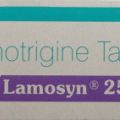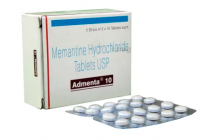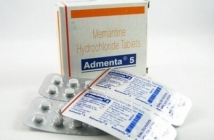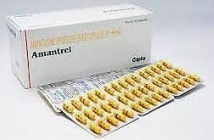Home / Categories / LAMEZ-25MG
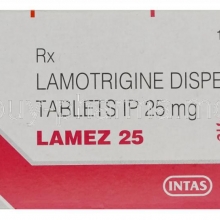
LAMEZ-25MG
(10)
LAMOTRIGINE-25MG
ANTI-CONVULSANTS
INTAS PHARMACEUTICAL-AQUILA-DIVISION
Product Details
Lamotrigine
A to Z Drug Facts
| Lamotrigine |
| lah-MOE-trih-JEEN |
| Lamictal |
| Tablets: 25 mg, Tablets: 100 mg, Tablets: 150 mg, Tablets: 200 mg, Tablets, chewable dispersible: 2 mg, Tablets, chewable dispersible: 5 mg, Tablets, chewable dispersible: 25 mg |
| Class: Anticonvulsant |
 Action Chemically unrelated to existing antiepileptic drugs (AEDs); precise mechanism(s) unknown. One proposed mechanism suggests inhibition of voltage-sensitive sodium channels, thereby stabilizing neuronal membranes which modulates presynaptic transmitter release of excitatory amino acids (eg, glutamate, aspartate).
Action Chemically unrelated to existing antiepileptic drugs (AEDs); precise mechanism(s) unknown. One proposed mechanism suggests inhibition of voltage-sensitive sodium channels, thereby stabilizing neuronal membranes which modulates presynaptic transmitter release of excitatory amino acids (eg, glutamate, aspartate).
Epilepsy: Adjunctive therapy in the treatment of partial seizures in adults and as adjunctive therapy in the generalized seizures of Lennox-Gastaut syndrome in pediatric and adult patients. Conversion to monotherapy in adults with partial seizures who are receiving treatment with a single enzyme-inducing AED (EIAED).
May be useful in adults with generalized tonic-clonic, absence, atypical absence, and myoclonic seizures.
 Contraindications Standard considerations.
Contraindications Standard considerations.
 Route/Dosage As add-on therapy
Route/Dosage As add-on therapy
Lamotrigine Plus AED Regimen Containing Valproic Acid:
CHILDREN (2 to 12 yr): PO Wk 1 and 2: 0.15 mg/kg/day in 1 to 2 divided doses. Wk 3 and 4: 0.3 mg/kg/day in 1 to 2 divided doses. Maintenance dose: 1 to 5 mg/kg/day (max 200 mg/day in 1 to 2 divided doses).
ADULTS (> 12 yr): PO Wk 1 and 2: 25 mg every other day. Wk 3 and 4: 25 mg once a day. Maintenance dose: 100 to 400 mg/day in 1 to 2 divided doses. To achieve, escalate dose by 25 to 50 mg/day q 1 to 2 wk.
Lamotrigine Plus EIAEDs without Valproic Acid:
CHILDREN (2 to 12 yr): PO Wk 1 and 2: 0.6 mg/kg/day in 2 divided doses. Wk 3 and 4: 1.2 mg/kg/day in 2 divided doses. Maintenance dose: 5 to 15 mg/kg/day (max 400 mg/day in 2 divided doses).
ADULTS (> 12 yr): PO Wk 1 and 2: 50 mg/day. Wk 3 and 4: 100 mg/day in 2 divided doses. Maintenance dose: 300 to 500 mg/day in 2 divided doses. To achieve, escalate dose by 100 mg/day q wk.
Patients receiving multi-drug regimens employing EIAEDs without valproic acid can have a maintenance dose of lamotrigine as high as 700 mg/day. With valproic acid, maintenance doses as high as 200 mg/day have been used. Patients receiving valproic acid and lamotrigine as a 2-drug regimen only cannot be given a safe and effective dose.
Acetaminophen, Carbamazepine, Primidone, Phenobarbital, Phenytoin, and Valproic Acid: May affect lamotrigine concentration.
Carbamazepine, Folate Inhibitors, and Valproic Acid: May be affected by lamotrigine.
 Lab Test Interferences None well documented.
Lab Test Interferences None well documented.
CNS: Dizziness; ataxia; somnolence; tremor; depression; anxiety; headache; insomnia; convulsions; irritability; incoordination. DERMATOLOGIC: Rash (can be life threatening); pruritis; sweating. GI: Nausea; vomiting; diarrhea; dyspepsia; constipation; abdominal pain; anorexia. GU: Dysmenorrhea; vaginitis; amenorrhea; urinary tract infection. RESPIRATORY: Rhinitis; pharyngitis; bronchitis; pneumonia. OTHER: Flu syndrome; fever; neck pain; diplopia; blurred vision.
Pregnancy: Category C. Lactation: Excreted in breast milk. Children: Safety and efficacy in children < 16 yr not established for uses other than the above listing. Melanin-Containing Tissues: Lamotrigine binds to melanin and may cause toxicity with possibility of long-term ophthalmologic effects. Special Risk Patients: Use with caution in renal/hepatic/cardiac function impairment. Photosensitivity: Photoallergy or phototoxicity may occur. Withdrawal Seizures: AEDs should not be abruptly discontinued because of possibility of increasing seizure frequency. Taper dose over a 2-week period. Rash: Serious rash such as Stevens-Johnson syndrome may occur; contact health care provider immediately. Renal Function Impairment: If significant impairment, reduce maintenance doses. Discontinuation Strategy: Administer a stepwise reduction of dose (50%/wk) over a 2-wk period. Discontinuing an EIAED may prolong the half-life of lamotrigine; discontinuing valproic acid may shorten the half-life of lamotrigine.
| PATIENT CARE CONSIDERATIONS |
|
- Administer as prescribed.
- May be administered without regard to meals.
- Administer tablets whole. Chewing tablets may leave a bitter taste.
- Chewable, dispersable tablets may be administered by chewing, swallowing whole, or dispersing in water or diluted fruit juice. Whole tablets, not fractions of tablets, must be administered.
- To disperse chewable, dispersable tablets, add prescribed number of tablets to a small amount (1 tsp or enough to cover tablets) of water or diluted fruit juice. Wait about 1 min for tablet to disperse, then swirl solution; administer immediately. Do not attempt to administer partial quantities of the dispersed tablets.
- Dosing regimen is dependent on age of patient, condition being treated, and concurrent use of other antiepileptic drugs.
- Administer reduced dose to patients with liver or kidney impairment.
- Store at controlled room temperature. Protect from moisture.
- Obtain patient history, including drug history and any known allergies. Note history of kidney, liver, or cardiac function impairment.
- Ensure that patient has reviewed the Patient Information before starting therapy.
- Monitor patient for skin rash, fever, hives, sores in the mouth or around the eyes, and lymphadenopathy. Discontinue therapy and notify health care provider immediately if noted.
- Monitor patient for GI, CNS, and general body side effects. Report to health care provider if noted and significant.
- Implement safety precautions for patients who experience dizziness or ataxia.
- Explain name, dose, action, and potential side effects of drug.
- Instruct patient to take exactly as prescribed and to not change the dose or discontinue unless advised to do so by health care provider.
- Advise patient to swallow tablet whole. Chewing the tablets may leave a bitter taste.
- Instruct patient in proper use of chewable, dispersable tablets.
- Advise patient that each dose may be taken without regard to meals.
- Warn patient that if a dose is missed to not double up on the next dose.
- Advise patient that if medication needs to be discontinued, it will be slowly withdrawn over a 2-wk period unless safety concerns (eg, rash) require a more rapid withdrawal.
- Caution patient that drug may cause dizziness or drowsiness and to use caution while driving or performing other tasks requiring mental alertness until tolerance is determined.
- Advise female patients to contact health care provider if becoming pregnant, planning on becoming pregnant, or breastfeeding.
- Instruct patient to discontinue therapy and contact health care provider immediately if developing a skin rash, hives, fever, swollen lymph glands, painful sores in the mouth or around the eyes, or swelling of the lips or tongue.
- Instruct patient to contact health care provider if seizures get worse or if new types of seizures occur.
- Advise patient to contact health care provider if developing side effects.
- Advise patient to not take any prescription or otc medications or dietary supplements unless advised to do so by health care provider.
- Advise patient that laboratory tests and follow-up visits will be required to monitor therapy and to keep appointments.
Books@Ovid
Copyright © 2003 Facts and Comparisons
David S. Tatro
A to Z Drug Facts
-->
Substitutes

 Indications
Indications Interactions
Interactions Adverse Reactions
Adverse Reactions Precautions
Precautions Administration/Storage
Administration/Storage Assessment/Interventions
Assessment/Interventions Patient/Family Education
Patient/Family Education